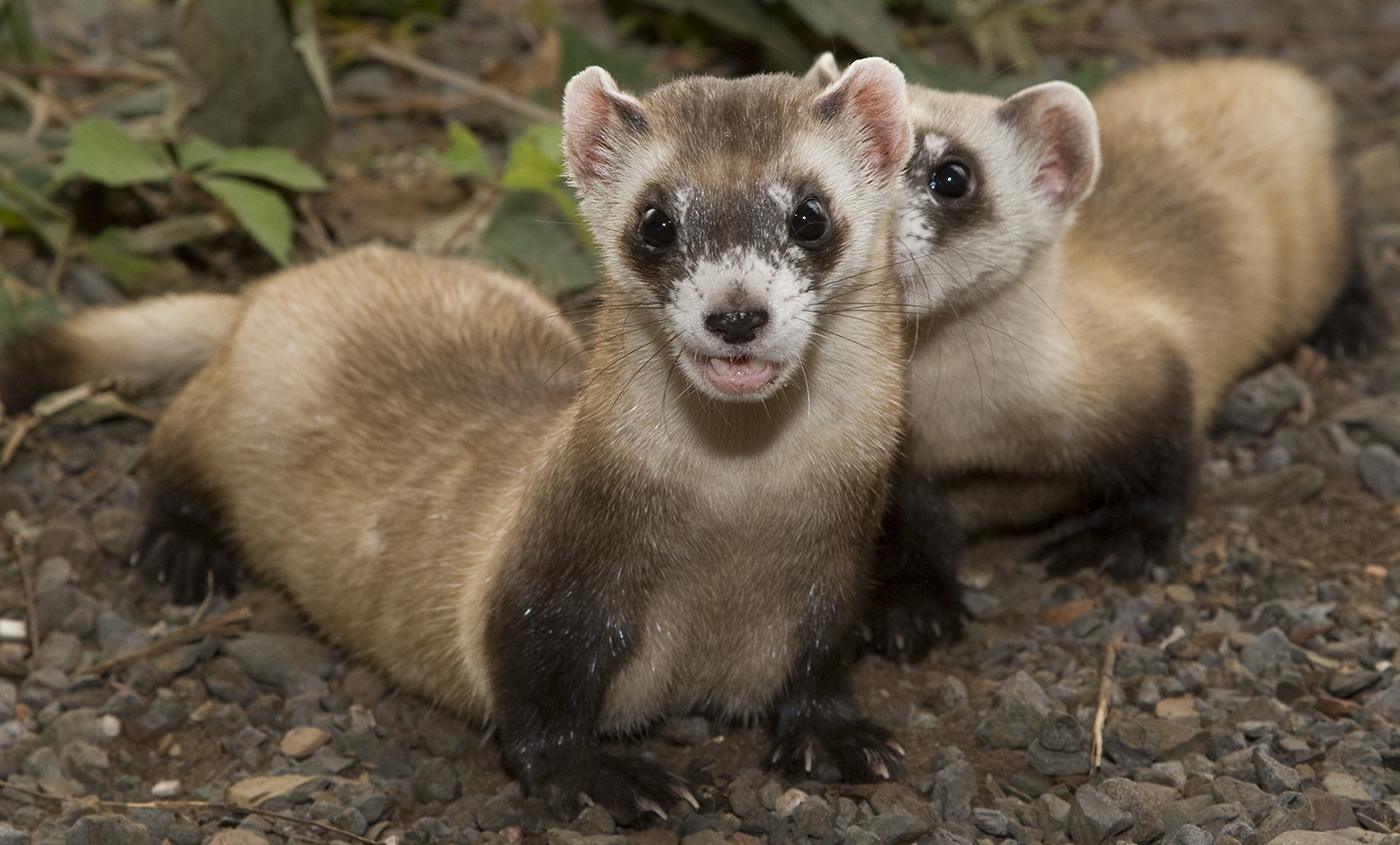The species declined throughout the 20th century primarily as a result of decreases in prairie dog Cynomys spp populations and sylvatic plague. The black-footed ferret was first officially recognized by the United States government as threatened in 1967 and was listed as endangered when the Endangered Species Act ESA was created in 1973.
 Black Footed Ferret Smithsonian S National Zoo
Black Footed Ferret Smithsonian S National Zoo
Black-footed ferrets rely primarily on prairie dogs for food.

Black footed ferret food. The tan ferrets also have black markings on their feet. Amazing Facts About the Black-Footed Ferret. The endangered black-footed ferret is a member of the weasil family.
Luckily a farmer discovered a surviving wild population in 1981 near Meeteetse Wyoming. Powered by Create your own unique website with customizable templates. A single black footed ferret can eat up to one hundred prairie dogs every single year so the survival of the black footed ferret it closely entwined with the survival of the prairie dog.
A black-footed ferret family of four will consume about 763 prairie dogs per year. Forest Service would expand the shooting and poisoning of native prairie dogs a critical food source for the endangered black-footed ferret. They are not eaten by any other animals.
Black-Footed Ferret Captive Breeding and Reintroduction. Black Footed Ferrets eat a variety of different animals but the vast majority of their diets are made up of prairie dogs. A new management plan released by the US.
The black-footed ferret Mustela nigripes also known as the American polecat or prairie dog hunter is a species of mustelid native to central North AmericaIt is listed as endangered by the IUCN because of its very small and restricted populations. Black-footed ferrets depend almost entirely on prairie dogs. Prairie dogs comprise over 90 percent of ferrets food source.
In the wild 90 percent of black-footed ferrets diet is prairie dogs. They have elaborate tunnels that allow them to have more than one entrance and exit into their shelters. These locations are ideal for another mammal the prairie dog.
Food requirements vary with the seasons and among individual ferrets but they generally consume one prairie dog every three or four days. Black-footed ferrets were first reintroduced on the Reservation in 1997 but an outbreak of sylvatic plague swept through the release sites in 1999 and decimated populations of ferrets and prairie dogs the ferrets main food item. These animals are the apex predators of the black-footed ferrets food web.
However they sometimes eat mice ground squirrels and other small animals. A food web is a system of interlocking and interdependent food chains. The Black-Footed Ferret often finds food under the ground.
By the time the United States Fish and Wildlife Service adopted a recovery plan for habitat protection in 1978 however the ferret had declined to near extinction. Prairie dogs make up more than 90 percent of the black-footed ferrets diet. The other 10 of a ferrets diet is made up of rats and mice.
Ferrets have a high metabolic rate and require large quantities of food in proportion to their body size. Currently habitat loss and introduced disease are key threats to this species. Black-footed ferrets use prairie dog burrows for their homes.
Black-footed ferrets were originally thought to be extinct in 1979. The black-footed ferret could also be called the black-eyed ferret because of the distinctive stick-em up mask that adorns its face. For example a black-footed ferret gets energy by eating prairie dogs and mice.
The arrows in the food web to the right point to the animal that gets energy by consuming it. The endangered black-footed ferret Mustela nigripes is a member of the weasel family Mustelidae which had been thought as extinct before. Normally over 90 of a black-footed ferrets diet consists of prairie dogs which are hunted and killed within their burrows.
They store extra food in their burrows too. The prairie dog is the black-footed ferrets main prey and makes up over 90 of its diet. Unlike the domestic ferret which has already been domesticated for hundreds of years the black-footed ferret is a wild ferret native to North AmericaIt has a tan body with black legs and feet a black tip on the tail and a black mask.
An adult ferret can consume over 100 prairie dogs in one year. And coyotes and foxes get energy from eating a black-footed ferret. Coyotes -- Black-footed Ferret -- Prairie Dogs -- Grasses If one of the organisms in the food chain above fails the rest of the food chain will all go extinct.
Scientists estimate that approximately 90 percent of a ferrets life is spent underground in passages and chambers made by prairie dogs. The ferrets are entirely dependent on prairie colonies for shelter food and raising young. The Black-footed ferret population fell drastically in the earlier half of the 20th century mainly due to habitat loss.
Black-footed ferrets are also known to eat ground squirrels small rodents rabbits and birds. This helps them to be able to survive during the winter when it becomes increasingly difficult to find enough food. This meal of choice makes up over 90 per cent of their diet.
It is the only ferret native to North America. Like many predators black-footed ferrets kill their prey by biting the throat causing suffocation. It is roughly the size of a mink and differs from the European polecat by the greater contrast between its dark limbs and pale body and the shorter length of its black tail-tip.
These animals will directly feed on the black-footed ferret. Fifteen black-footed ferrets are being released into prairie dog colonies on the Fort Belknap Reservation in September 2015. Black-footed ferrets are obligate carnivores meaning they consume one type of prey almost exclusivelyin their case the prairie dog.